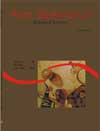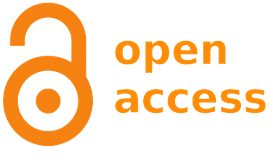<b>Ichthyofauna of the Diamante stream, Caiuá Ecological Station (Diamante do Norte, Paraná State): monitoring its composition and structure</b> - DOI: 10.4025/actascibiolsci.v31i2.3907
Keywords:
conservation, fish, species introduction, environmental damage
Abstract
The aim of this study was to assess of composition and structure of ichthyofauna over two distinct periods: three and eleven years after the establishment of the protected area. The results of composition and structure of the ichthyofauna of the Diamante River, sampled quarterly from November 2005 to August 2006, were compared to results obtained by Abilhoa and Bastos (2005) in studies conducted between August 1997 and December 1998. The 2.4 to 16 cm-mesh gillnets were exposed for 24 hours and checked every 8 hours. In order to characterize the ichthyofauna, patterns of species richness, diversity, evenness and frequency of occurrence of species were analyzed. A total of 673 individuals, distributed among 36 species, 13 families and four orders were sampled. Significant changes were found in ichthyofauna composition, with a reduction in diversity and evenness as compared to the previous study. The high representativeness of alien species indicates instability in the studied area, through changes in diversity, species replacement, predominance of opportunistic species, and physical changes such as silting and degradation of the body of water.Downloads
Download data is not yet available.
Published
2009-05-14
How to Cite
Morales, B. F., Cionek, V. de M., & Benedito, E. (2009). <b>Ichthyofauna of the Diamante stream, Caiuá Ecological Station (Diamante do Norte, Paraná State): monitoring its composition and structure</b> - DOI: 10.4025/actascibiolsci.v31i2.3907. Acta Scientiarum. Biological Sciences, 31(2), 143-148. https://doi.org/10.4025/actascibiolsci.v31i2.3907
Issue
Section
Ecology and Limnology
DECLARATION OF ORIGINALITY AND COPYRIGHTS
I Declare that current article is original and has not been submitted for publication, in part or in whole, to any other national or international journal.
The copyrights belong exclusively to the authors. Published content is licensed under Creative Commons Attribution 4.0 (CC BY 4.0) guidelines, which allows sharing (copy and distribution of the material in any medium or format) and adaptation (remix, transform, and build upon the material) for any purpose, even commercially, under the terms of attribution.
Read this link for further information on how to use CC BY 4.0 properly.
0.6
2019CiteScore
31st percentile
Powered by 

0.6
2019CiteScore
31st percentile
Powered by 











1.png)




3.png)













